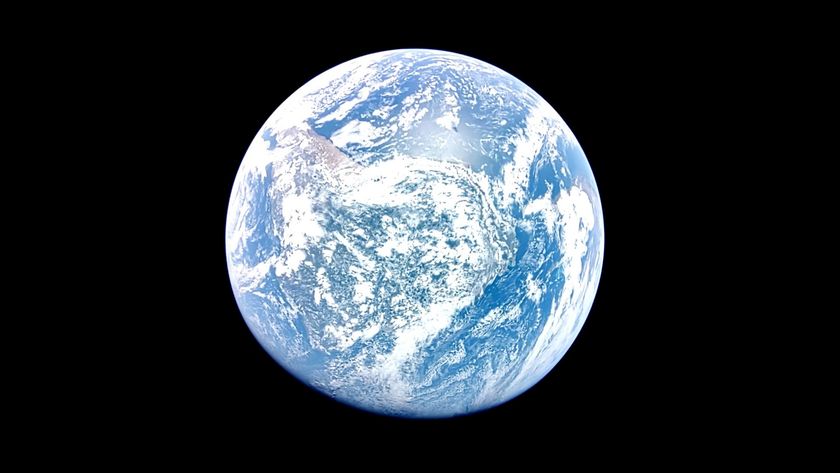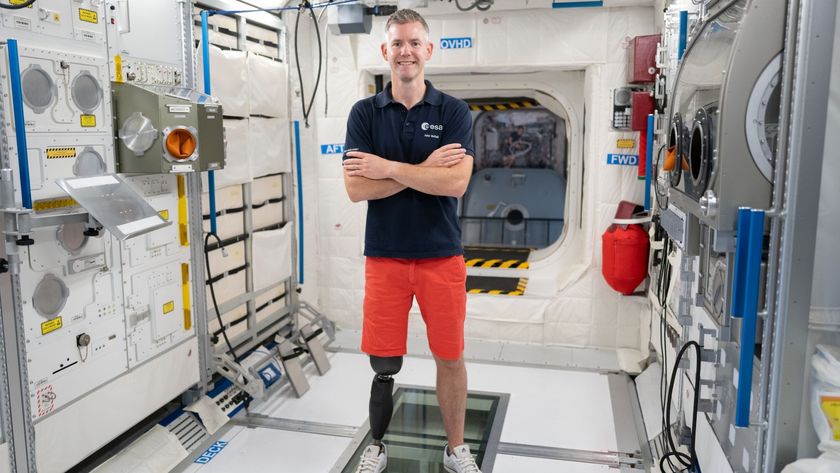Alien Vs. Predator: What's Really Out There
Standing in the ticket line for Alien vs Predator, I assumed this movie would be a souped-up version of a video game, a small home entertainment pumped up on Hollywood steroids to fill the big screen. Of course, I couldn't help but notice that the line extended over three counties, and the movie had grabbed top ranking at the box office its first weekend out. Facts are, Alien vs Predator is not just mindless bloat, and a better film than folks over thirty will expect.
Get this straight: the movie is a cut-and-paste job. It's a pastiche of a half-dozen situations from well-known sci-fi pictures, a quilt sewn together from tried-and-true scraps of film fabric.
The plot (don't worry; it doesn't extend beyond the movie's halfway mark) is cranked up fast, as an orbiting surveillance satellite finds a weird object buried thousands of feet under Antarctica (think The Thing). Next, a wealthy, but terminally ill industrialist, Charles Bishop Weyland, decides to hire some experts to find out what the hidden edifice is, mostly to inject some last-minute thrills into his waning life (think Contact).
Then there's the obligatory montage as the "team" - a hodge-podge of reluctant, wise-cracking academics - is assembled. Team leader Alexa Woods (played by Sanaa Lathan), is busy climbing her way up a precipice in the Himalayas that's slightly steeper than the Washington Monument when she gets the call to action (think Kirk in Star Trek IV). The under-ice construction found by the satellite dates from the dawn of mankind, and is built in a mishmash ziggurat style that incorporates the most grandiose elements of the Egyptians, Aztecs, and others from our archaeological past who lived large on stone (think Indiana Jones, among dozens).
All this is just to set the scene for the film's real raison d'etre: the battle between two species from classic sci-fi films that are box office draws in their own right: Alien and Predator. Freshly hatched hordes of the former and a well-armed squad of the latter engage in a ritual hunt deep underground, while Weyland's team alternately serves as victim, breeding accessory (for the Aliens), and occasional combatant. Yep, it's Godzilla vs Monster Zero vs the Tokyo defense forces.
Mindless violence, I hear you thinking. Well, sure. This really is a comic book, a video game, and the extraterrestrial equivalent of a mano-a-mano contest of strength, wits, and spring-loaded weapons. And even though the first part of the film, in which the humans work their way into Earth's nether regions to explore and discover, is rather more interesting than the stochastic brutishness that follows, you've got to admit that it's not every day that you watch a litter of non-carbon based life forms (the Aliens) making a sincere effort to dine on a bunch of grunting hulks from another world (the Predators). It has the fascination of feeding time in the Big Cat cage.
What's Really Out There
Get the Space.com Newsletter
Breaking space news, the latest updates on rocket launches, skywatching events and more!
Of course, films like this suggest that the Galaxy is largely populated by highly aggressive species, ones whose interest in Earth might extend no farther than using it now and again as a hunting lodge. The tracts of space, in this view, are akin to the unknown seas on medieval maps -- "here be monsters" -- vast, forbidding habitats that lap the shores of the civilized world, and are stuffed with dangerous creatures.
That's unlikely to be typical. We still can't say what real aliens are like, of course, but science can provide some useful insights. After all, any biology out there will exist in a landscape of finite resources. Darwinian competition will be their lot, as well as ours. So you can expect that there will be predators. Predation is an economic device: carnivores leave it to plants or plant eaters to slowly build up energy-rich molecules from sunlight or some other source. They then harvest this crop of useful compounds quickly, a tactic that can power an active life style.
But of course, for an intelligent species with technology capable of interstellar travel, predation is oh-so Stone Age. Even today, humans (who are a long way from being able to make sporting trips to other star systems) don't rely on predation much. We farm our food, and soon we'll manufacture it. Killing just for the fun of it, as the Predators do, is no longer considered socially acceptable in most circles. Real Predators, who must be many thousands of years ahead of us, have presumably moved beyond this.
As unlikely as the Predator may be, even aside from its oddball, anthropomorphic appearance -- a brushed steel Samurai with dreadlocks -- it's still more believable than Alien. This toothy terror, with its nitric acid blood (pray that it doesn't get a nosebleed in the car), depends on humans for breeding. Now sure, there are some terrestrial species, such as the ichneumon fly that use other creatures as part of their reproductive cycle. But those other creatures are at least hanging around on the same planet! Imagine the evolutionary difficulties for some species that requires a chance encounter with beings from another world just to have kids! That is not a winning survival scenario.
OK, it's just a movie. And indeed, it is: one that plays well to our innate fear of large teeth and excessive mucous. It doesn't tell us nearly as much about extraterrestrial life as it does about our darkest dreams. But Alien vs Predator is made with such style and attention to detail that it rises above being just a pay-per-view wrestling match between ugly combatants. It's not deep, but it's not throw-away either. This is a film that you'll both enjoy and think about the next day.
Join our Space Forums to keep talking space on the latest missions, night sky and more! And if you have a news tip, correction or comment, let us know at: community@space.com.

Seth Shostak is an astronomer at the SETI (Search for Extraterrestrial Intelligence) Institute in Mountain View, California, who places a high priority on communicating science to the public. In addition to his many academic papers, Seth has published hundreds of popular science articles, and not just for Space.com; he makes regular contributions to NBC News MACH, for example. Seth has also co-authored a college textbook on astrobiology and written three popular science books on SETI, including "Confessions of an Alien Hunter" (National Geographic, 2009). In addition, Seth ahosts the SETI Institute's weekly radio show, "Big Picture Science."


